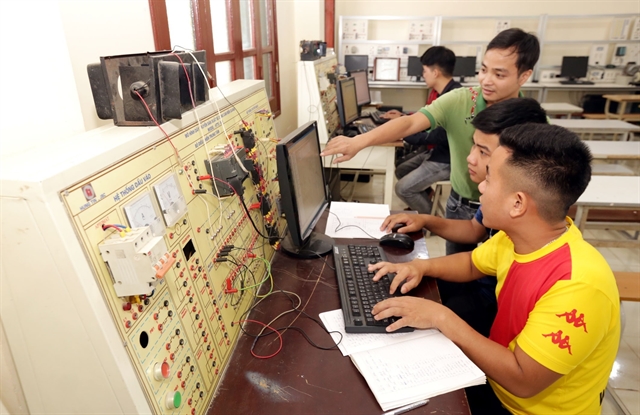 Opinion
Opinion

Lê Hồng Quân, Vice Minister of Labour, Invalids and Social Affairs, talks to Lao Động (Labour) newspaper on the need for students to make the right choice for their future career

|
| A training class in electronics at Điện Biên Province's Occupational College. — VNA/VNS Photo Anh Tuấn |
Lê Hồng Quân, Vice Minister of Labour, Invalids and Social Affairs, talks to Lao Động (Labour) newspaper on the need for students to make the right choice for their future career
How do you feel about high school graduates’ tendency to enrol in occupational training institutions rather than to go to university?
In 2018, some 2.2 million people, including high school graduates, attended occupational training schools nationwide. Some 540,000 of them attended occupational training college or secondary training college.
In the last few years, some 80.5 per cent of the graduates of these institutions immediately go to work following their graduation. This is an indication that students nowadays are becoming more practical.
In 2014, about 49 per cent of Vietnamese workers had attended occupational courses. By 2018, the number had jumped to 58.6 per cent.
In 2019, the Ministry of Labour, Invalids and Social Affairs set a plan to have some 2.3 million young people enrolled in occupational training institutions. As a result, more than 60 per cent of workers will have attended occupational training courses. Việt Nam also set a target that by 2025, enrolment in these training courses will reach some 4.6 million, of which 85 per cent will get jobs following their graduation.
What should occupational training centres do to increase enrolment?
In the past few years, many provinces have adopted effective policies to attract students. In Đồng Nai Province, next to Hồ Chí Minh City, the authorities decided to consider case by case whether to pay 100 per cent or 60 per cent of the school fees for local students.
Hà Nôi, Hồ Chí Minh City and other provinces have also adopted similar policies to attract students to vocational courses.
In your opinion, what should vocational schools do improve their training quality and attract more students?
Việt Nam is in the course of industrialisation and modernisation, so we are in great need of high quality workers.
To have a quality workforce, whether we want it or not, we have to improve the quality of our occupation training. And, of course, training programmes should be practical to meet the demands of the labour market. Enterprises should be involved throughout the training as investors and customers.
What’s the role of occupational training institutions in helping students who want to create their own start-up?
The Ministry of Labour, Invalids and Social Affairs has paid special attention to the start-up programme, particularly the role of occupation training institutions in helping their students pursue their dreams. The idea has already been reflected in the Prime Minister's decision issued on Oct.30, 2017.
It is projected that by 2025 all occupation training establishments will have programmes to support student start-ups. These programmes are expected to attract some 12 million participants.
So far about 50 per cent of occupational training facilities nationwide have adopted policies to help students start their own companies. — VNS




